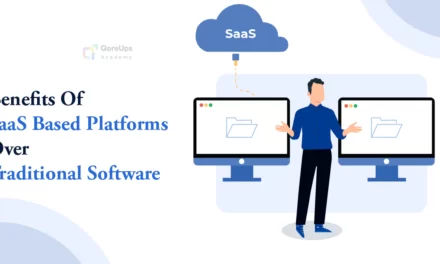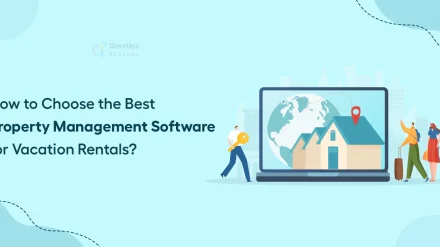The most critical decision an entrepreneur would make is the cost to build an online marketplace.
Entrepreneurs wish to build an online marketplace like Airbnb, Amazon, or Etsy. But, when it comes to cost, many back off their plans.
The reason is that they don’t know how to balance the marketplace cost or which factor determines the price.
Some factors influence marketplace development costs, such as the features and functionality required, the design, technical requirements, the development team, time frame, maintenance and support, and testing and quality assurance.
Also, in this chapter of “How Much Does It Cost To Build an Online Marketplace,” we explore the key factors that will impact the cost of developing a marketplace and how to balance them.
First, We’ll dive into the different ways to build an online marketplace, including building from scratch, SaaS marketplace software, ready-made platforms, etc.
Each approach has its own cost considerations and trade-offs. We’ll explore these in detail.
4 Ways To Build An Online Marketplace
There are several ways to build an online marketplace, depending on your technical expertise, budget, and business requirements. Here are some common ways to build an online marketplace:
Build From Scratch
You can build your online marketplace from scratch using programming languages like PHP, Python, or Ruby on Rails.
This option gives you complete control over the development process and allows for unlimited customization options.
However, this option requires a high level of technical expertise and can be time-consuming and expensive.
Ready-Made Platform
You can use a ready-made platform like Makent, Gofer, etc. These platforms offer a range of pre-built templates, plugins, and themes that can help you quickly set up an online marketplace without any coding knowledge.
However, these platforms may limit your customization options and scalability.
SaaS Marketplace Software
You can use SaaS marketplace software like QMarket, Arcadier, etc., to build an online marketplace.
These software platforms offer pre-built marketplace features and functionality, making it easier for you to launch an online marketplace quickly.
However, these platforms may limit your customization options and may come with monthly subscription fees.
Hire A Freelance Developer
You can hire a freelance developer to build your online marketplace from scratch.
This option gives you more control over the development process and allows for more customization.
However, you need to ensure that the developer has the required skills and experience to build a robust and secure online marketplace.
However, this option can be more expensive than other options.
SaaS Marketplace Software vs Ready-Made Platform vs Build From Scratch
| Aspect | SaaS Marketplace Software | Ready-Made Platform | Build From Scratch |
|---|---|---|---|
| Customization | Configurable | Pre-defined | Tailored |
| Development Time | No Development Time | Around Week or 2 months Depends on Customization | Minimum A Year |
| Scalability | Scalable | Limited | Dependent |
| Integration Complexity | Low | Low/Moderate | Customizable |
| Technical Expertise | Limited | Moderate | Extensive |
| Maintenance | Provider with no cost | Provider with additional cost for maintenance | Internal |
| Time-to-Market | Fast | Immediate | Longer |
| Integration | Existing Systems/APIs | Limited | Custom |
| Upgrades | Regular with no cost | Platform with an additional cost of $600 to $6000 | Internal |
| Overall Cost To Build Online Marketplace | Starts From $49 | ~ $6,000–$20,000 | ~ $97,000–$155,000 |
How Much Does It Cost To Build An Online Marketplace
In the initial stage, building an online marketplace can cost anywhere from a few thousand dollars, depending on the complexity and scale of the project. It includes

Developing Marketplace MVP
The cost to develop a marketplace MVP (Minimum Viable Product) will depend on various factors, including the size and complexity of the project, the development approach, and the platform used.
It is important to keep in mind that these are just rough estimates, and the actual cost will depend on various factors, such as the platform used, the level of customization required, and the complexity of the project.
Additionally, ongoing costs such as hosting, and maintenance fee should also be considered in the Ready made platform and build from scratch.
SaaS Marketplace Software
The marketplace software doesn’t require a separate cost to build a marketplace MVP. Marketplace software is pre-built software designed specifically for building marketplaces, and it can provide a faster and more cost-effective solution compared to building from scratch. You can simply enable the needed MVP feature to build it with a single subscription.
Ready-Made Platform
The cost of building a marketplace using a ready-made script can vary based on the complexity and features required. For a basic marketplace MVP, the cost ranges from $5,000 to $15,000, while a standard MVP may cost $15,000 to $30,000.
An advanced MVP with more advanced features can cost $30,000 to $100,000 or more. These estimates are approximate and depend on the specific script and customization needs.
Build From Scratch
Building a marketplace from scratch involves costs that can vary based on the complexity and scale of the project. For a Basic Marketplace MVP, the estimated cost ranges from $10,000 to $50,000. A Standard Marketplace MVP may cost between $50,000 to $150,000. Meanwhile, an Advanced Marketplace MVP can range from $150,000 to $500,000 or more.
It’s important to note that these estimates are rough approximations, and the actual cost can vary depending on specific requirements, technology choices, development time, and other factors.
Customization Cost To Build Online Marketplace
The cost of customization in an online marketplace can vary greatly depending on a number of factors, such as the type of customization being offered, the complexity of the customization process, the size of the marketplace, and the specific platform or technology being used to facilitate the customization.
Some online marketplaces may offer basic customization options at no additional cost, such as allowing customers to choose colors or sizes for products.
However, more complex customization options, such as adding custom designs or personalized features, may come with additional fees.
3rd Party Integration Cost To Build Online Marketplace
3rd party integration is an important component of the online marketplace. It helps to enhance its functionality and provide a better user experience.
Some integrations like Payment Gateways, Shipping And Logistics Management, CRM Tools, Marketing Automation, Analytics Tools, etc, are a must for an online marketplace to run smoothly.
Marketplace Maintenance,
The maintenance cost of the marketplace varies depending on the factors such as
- Size of the marketplace
- Features and Functionalities
- Technical Infrastructure
Some common fields that require maintenance are
Website Hosting
You will need to pay for website hosting services to keep your online marketplace running smoothly. The cost of hosting a website can vary depending on the hosting provider you choose and the amount of traffic your marketplace receives.
Software Updates And Maintenance Cost To Build Online Marketplace
You will need to ensure that your online marketplace software is up-to-date and free of bugs and security vulnerabilities. This may require regular software updates and maintenance, which can incur additional costs.
The cost of software updates and maintenance can vary depending on the size and complexity of your online marketplace, as well as the software and technology stack that you are using.
Size And Complexity
Larger and more complex marketplaces may require more frequent updates and maintenance, which can increase the overall cost.
Technology Stack
The cost of updates and maintenance can also vary depending on the technology stack that you are using. For example, if your marketplace is built on a proprietary or legacy technology, it may be more costly to maintain and update compared to a marketplace built on open-source or modern technologies.
Third-Party Software
If your marketplace uses third-party software or integrations, the cost of updates and maintenance may depend on the availability and cost of updates from the third-party providers.
Internal Vs. External Maintenance
If you have an internal team dedicated to maintaining and updating your marketplace, the cost may be lower compared to outsourcing maintenance to external vendors or consultants.
Frequency Of Updates
The more frequently you update your marketplace software, the higher the cost of maintenance may be. However, frequent updates can help prevent security vulnerabilities and improve performance, which can save costs in the long run.
Customer Support
You will need to provide customer support to your marketplace users, which may require hiring dedicated support staff or outsourcing to a third-party provider.
Legal And Regulatory Compliance
Depending on the industry and geographic location of your marketplace, you may need to comply with various legal and regulatory requirements. This can include data privacy regulations, consumer protection laws, and tax laws.
Overall, the maintenance cost for an online marketplace can range from a few hundred dollars per month for a small marketplace to tens of thousands of dollars per month for a large marketplace with many users and complex functionality.
Conclusion
Creating an online marketplace can be a costly endeavor, with a wide range of factors that can impact the total cost of development.
It’s essential to consider all of these factors carefully and balance them with your budget to ensure a successful launch.
While the cost to build an online marketplace can seem daunting, it’s important to remember that the investment can yield significant returns in the long run.
A well-designed and executed marketplace can attract a large user base, generate significant revenue, and establish a strong brand presence in the market.
Ultimately, the key to success lies in finding the right balance between cost and functionality and prioritizing the features and functionality that are most important to your target audience.
By carefully considering your options, working with a trusted development team, and taking a strategic approach to your marketplace launch, you can build a successful online platform that delivers value to both users and stakeholders.






